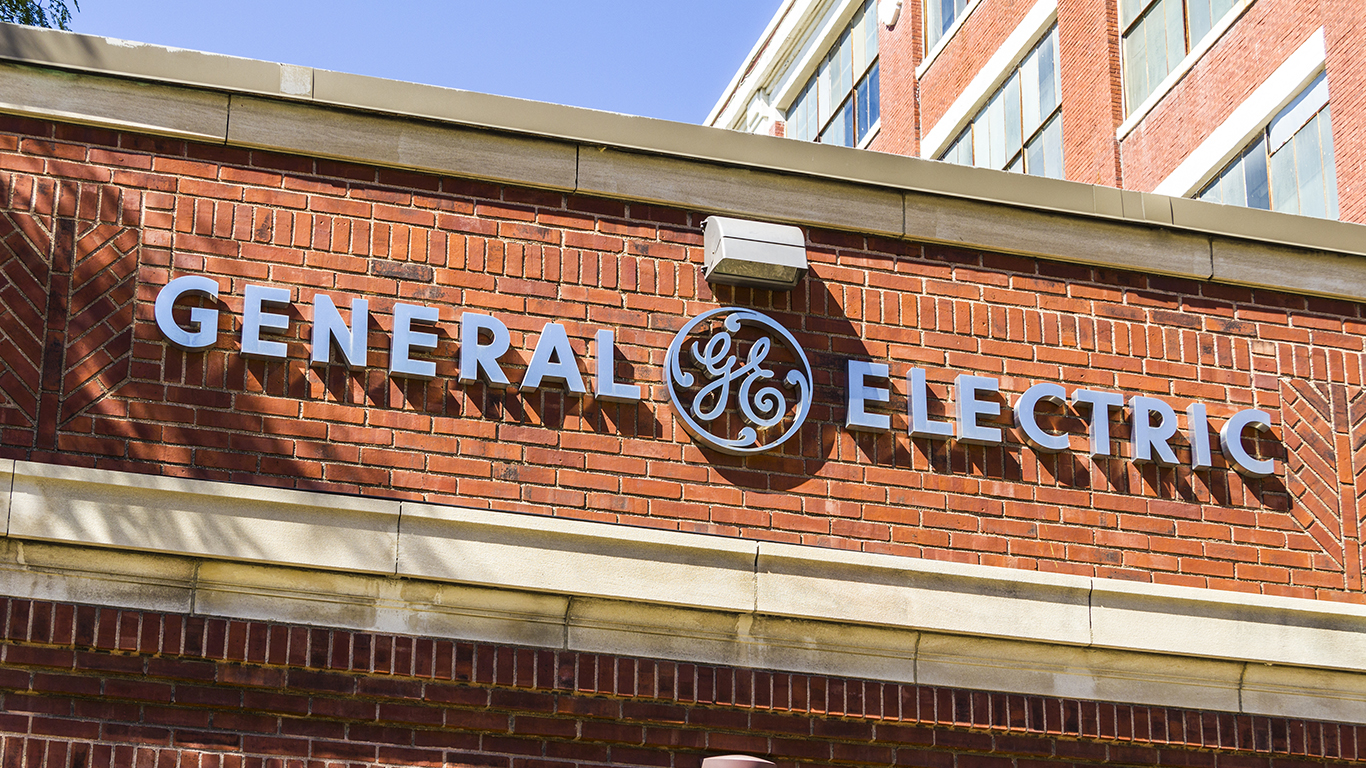Industrials
Why General Electric's Misses Are Pushing Shares Higher

Published:
Last Updated:

General Electric Co. (NYSE: GE) reported third-quarter 2018 results before markets opened Tuesday. The conglomerate reported adjusted earnings per share (EPS) of $0.14 on revenues of $29.57 billion. In the same period a year ago, GE reported adjusted EPS of $0.21 on revenues of $30.66 billion. Third-quarter results also compare to the consensus estimates for EPS of $0.20 on revenues of $29.92 billion.
The industrial giant said it plans to cut its quarterly dividend from $0.12 per share to $0.01 per share when it next declares a dividend in December. The change will save the company about $3.9 billion annually in cash.
GE also said it plans to reorganize its Power segment in a move to speed up both operating and financial improvements. The segment will be split into two businesses, a unified Gas business and a portfolio of other assets from the Power division. That process was begun earlier this month when the company announced a noncash, pretax impairment charge of $22 billion related to the acquisition of Alstom.
Chairman and CEO H. Lawrence Culp Jr. said:
After my first few weeks on the job, it’s clear to me that GE is a fundamentally strong company with a talented team and great technology. However, our results are far from our full potential. We will heighten our sense of urgency and increase accountability across the organization to deliver better results.
We are on the right path to create a more focused portfolio and strengthen our balance sheet. My priorities in my first 100 days are positioning our businesses to win, starting with Power, and accelerating deleveraging. We are moving with speed to improve our financial position, starting with the actions announced today. I look forward to updating you further on our progress in early 2019.
The Power segment posted third-quarter revenue of $5.74 billion, down 33% year over year. The segment posted a net loss of $631 million.
The Renewable Energy segment reported revenue of $2.87 billion, up 15% but a profit of just $60 million, down 72%. The Oil & Gas segment reported revenue of $5.67 billion, up 7% and adjusted profit of $247 million, up 18%.
The Aviation segment was GE’s best performer, with revenue of $7.48 billion and profit of $1.67 billion, up 12% and 25%, respectively, year over year. Healthcare revenue was flat at $4.71 billion and profit rose by 2% to $861 million.
GE did not offer any guidance for the fourth quarter or the full fiscal year, but analysts were looking for fourth-quarter EPS of $0.31 and revenue of $32.83 billion before this morning’s report. Full-year estimates call for EPS of $0.88 and revenue of $121.59 billion. While it’s conceivable that GE could hit those numbers, tacking the fourth-quarter estimates onto the year-to-date totals indicates that full-year EPS will total just $0.80 and revenue will come in just short of the current full-year estimate.
Without saying as much, Culp and GE are now focusing on free cash flow, which fell to a negative $3.35 billion in the third quarter. On a non-GAAP basis, eliminating more than $5 billion in pension funding, free cash flow totaled $940 million. Adding in contributions from its Baker Hughes subsidiary, free cash flow totaled $1.09 billion in the quarter. Cutting the dividend will add about $1 billion to that total in the current total.
Investors appear willing to give GE and Culp the benefit of the doubt, at least today. Culp noted that he will have more to say about the company’s plans early next year.
Shares traded up about 2.7% in Tuesday’s premarket session, at $11.39 in a 52-week range of $10.93 to $20.75, and the low was posted yesterday. The 12-month consensus price target was $15.69 before results were announced.
Are you ahead, or behind on retirement? For families with more than $500,000 saved for retirement, finding a financial advisor who puts your interest first can be the difference, and today it’s easier than ever. SmartAsset’s free tool matches you with up to three fiduciary financial advisors who serve your area in minutes. Each advisor has been carefully vetted and must act in your best interests. Start your search now.
If you’ve saved and built a substantial nest egg for you and your family, don’t delay; get started right here and help your retirement dreams become a retirement reality.
Thank you for reading! Have some feedback for us?
Contact the 24/7 Wall St. editorial team.